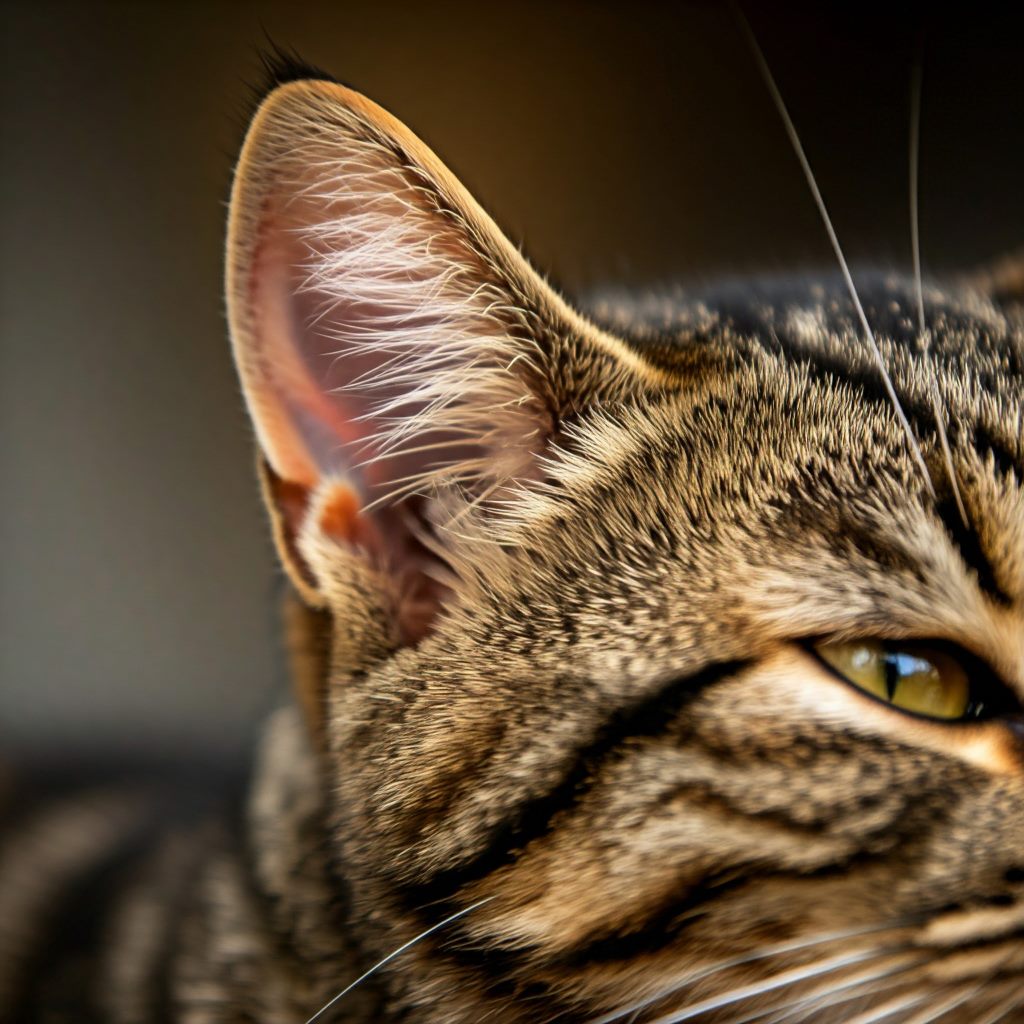
Cats flick their ears for a variety of reasons. The most common reason is that they’re getting annoyed with something you or another cat is doing (or they’re annoyed by something they can’t see).
Another common reason is that they’re trying to figure out where a sound is coming from so they know how to respond. It’s also possible that your cat’s ears are flicking because of a medical condition, so if you notice this behavior in your cat, make sure you take him to the vet for an exam.
Here are some other possible reasons why cats flick their ears:
Your cat is frightened or anxious
Cats are often afraid of new people and unfamiliar situations. If your cat is flicking his ears back and forth, he might be feeling stressed or uncomfortable around you or another person in your home. Some signs include hiding under furniture, avoiding eye contact with you and other people in the home, running away from strangers and hiding behind objects such as curtains or doors.
Your cat wants attention
If your cat is flicking his ears back and forth while staring at you intently, then he probably wants something from you — probably more attention! Make sure that you’re paying enough attention to him when he’s doing this, because it’s clear that he needs it!
Cat ears are designed to help them hunt — they act like radar dishes to pick up the slightest sound. Flicking the ears means that your cat is listening to something. It could be anything from a noise in the house to an outside noise that has caught their attention.
How Cat Ears Show Their Mood?
Cat ears show a lot about the mood of your cat. One of the most common signs is when a cat’s ears are back. This means that they are afraid or angry. The ears can also be flat against their head, which shows aggression. If you see this, it’s best to stay away from your cat.
When cats have their ears forward, they are showing curiosity and interest in something happening in front of them. This can be anything from another animal or person, to an object in their environment that they want to investigate more closely.
If you see one ear pointing up and one ear pointing down, then it usually means that your cat is relaxed or bored with what’s going on around him or her at that moment.
If your kitten’s ears are flat against its head and back, it shows that he is scared or defensive about something that may happen soon such as if there is another animal in the room or someone walking into your home unexpectedly! This is also known as ‘defensive threat’ behavior which means they are trying to look bigger than they really.
Why Do Cats Do Airplane Ears?
Airplane ears are one of the most common cat ear expressions, as well as one of the easiest to recognize. When your cat folds his ears back, it’s usually because he’s afraid or nervous about something.
There are many reasons why cats do airplane ears, but they can be grouped into two categories: stress and excitement.
Stress: When a cat feels threatened or scared, he will often flatten his ears to reduce his head size and make himself look less intimidating. This is seen in cats that have been declawed or spayed. It is also seen when they are nervous or anxious about something they don’t understand, such as being in an unfamiliar place or around new people or animals.
Excitement: When a cat is excited or curious about something, he will stand up tall and point his ears forward. The reason for this is so he can hear better so that he can judge how far away the object of his interest is and get a better idea of what it might be doing (i.e., coming closer). If you’ve ever seen a cat with his head tilted sideways while looking at something, this could be because he’s trying to figure out if it’s coming closer or farther away from him!
Why Do Cats Ears Twitch When You Touch Them?
Cats’ ears twitch and move in response to different stimuli. For example, if you pet your cat on his head or under his chin while he’s laying down, he might raise his head and look at you with his eyes wide open. This is a sign of affection and happiness and shows that he loves being petted. If your cat is getting ready to pounce on something (or someone) he will also raise his head high so he can get a better view of what’s ahead of him.
Ears also twitch when cats become aroused by certain stimuli like sound or movement. For example, if your cat hears something outside that sounds like prey such as birds singing or mice squeaking then his ears will probably perk up in anticipation for when he gets the opportunity to chase them down later on in the day.
If your kitty has just eaten or is getting ready for bed, she may have one ear up and one ear down — especially if both of them are down on the same side. This means that she’s tired or full and doesn’t want any more food or attention. If both of her ears are up at the same time on opposite sides of her head (one up and one down), it usually means that she’s alert and wants to play with you!
Cats have a wide range of body language they use to communicate with other cats and humans alike. Their ears can move in many different directions depending on their moods or intentions.
Why Do Cats Ears Twitch When They Sleep?
If you’ve ever owned a cat, you’ve probably noticed that they twitch their ears when they sleep. This is a perfectly normal behavior and it can be attributed to a number of factors.
There are several reasons why your cat may twitch their ears when they sleep:
When a cat sleeps and their breathing slows down, their blood flow also slows down — which means that there’s less blood flowing through the veins in their ear canal.
This lack of blood flow can cause ear wax buildup in some cats, which causes irritation and pain. To prevent this from happening, cats will twitch their ears frequently while they’re sleeping so that they can keep the ear canal clean and free of debris (like dirt or dead skin cells). This is especially important if your cat likes to roll around on the floor while they sleep because this activity can cause wax buildup in just one ear!
The twitching of your cat’s ears may be a response to stimuli that he can’t see, hear or smell — such as magnetic fields, temperature changes and even electricity (like lightning). Some experts believe that cats can detect changes in these stimuli before humans do and use this ability to predict weather changes or earthquakes.
Finally, cats can twitch their ears as part of their grooming routine. This might seem like an odd thing to do while sleeping but remember: cats are very clean animals and they take good care of themselves when they’re awake as well as when they’re asleep!
Why Do Cats Flatten Their Ears When Playing?
A cat flattening its ears usually indicates that it is feeling threatened or frightened by something. For example, if your cat has been playing with another animal and all of a sudden sees that animal as a threat, it will flatten its ears as a sign that it does not want to fight.
On the other hand, if your feline has its ears back and slightly forward, that indicates curiosity and interest in an object or situation. If your kitty’s ears are perked up high and forward, then he’s probably listening intently for sounds from outside or inside your home — like the door shutting or someone walking down the hallway — so he knows what’s going on around him at all times for his own safety.
A flattened ear can also mean that your cat is afraid or angry, but it’s not always easy to tell the difference between these two behaviors. A cat who is frightened will usually also have its tail tucked under its body and may be crouching low to the ground with its eyes wide open. An angry cat will also flatten its ears, but it will also growl or hiss at whatever has disturbed it.
The best way to tell whether your cat is playing or being aggressive is to watch how it moves — playful cats tend to be more active than aggressive ones, who tend to stand still with their tails down between their legs or even lash out at whatever has upset them.

